A (Black) Gat in the Hand: John Bullard on REH’s Rough and Ready Clowns of the West – Part I
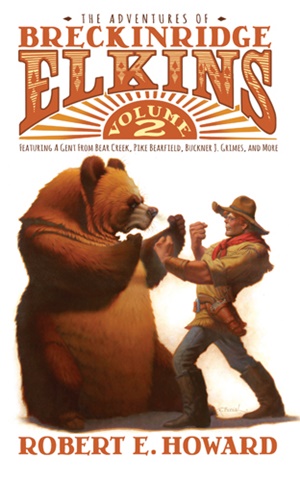 “You’re the second guy I’ve met within hours who seems to think a gat in the hand means a world by the tail.” – Phillip Marlowe in Raymond Chandler’s The Big Sleep
“You’re the second guy I’ve met within hours who seems to think a gat in the hand means a world by the tail.” – Phillip Marlowe in Raymond Chandler’s The Big Sleep
(Gat — Prohibition Era term for a gun. Shortened version of Gatling Gun)
A (Black) Gat in the Hand was primarily about hardboiled Pulp stuff when it began, because that’s what I mostly what I was interested in, and knew about. And I was the one writing it. But over our six year run here, I’ve gotten some friends to help me out. Some wrote about hardboiled, but others have filled in the Pulp gap with interesting essays on other areas. I’m really pleased that the scope has been expanded. And the next few weks, we’re gonna explore the Western genre (Duane Spurlock started us off with a 2019 essay on one of my favorites – T T Flynn).
I’ve gotten to know a bunch of neat folks through my love of Robert E. Howard. And I met fellow REH Foundation Award winner John Bullard at the 2022 Howard Days. We have several common interest areas. One is Robert E. Howard. One is NOT Howard’s Breckenridge Elkins (though we both like Sailor Steve Costigan). John joins A (Black) Gat with a deep dive into Howard’s successful character. Next week he’ll be back for a look into Howard’s other humorous Western characters.
Rough and Ready Clowns of the West: Robert E. Howard’s Humorous Western Characters, Part I
Since Bob invited me to contribute something on Robert E. Howard and his voluminous writings for his continuing A (Black) Gat in the Hand series, I thought I would write on Howard’s humorous pulp Western characters. They are not particular favorites of Bob’s (shocking!), so he probably won’t be writing about them for this series any time too soon. Also, this summer is the 90th anniversary of the creation of Breckinridge Elkins, one of Howard’s best-selling characters during his life. Because Elkins was such a success, Howard created three more humorous Western characters using Elkins as a starting point: Bearfield Elston, Buckner J. Grimes, and Pike Bearfield. That should be enough reasons for a look at Howard’s rough and ready clowns of the West.
Beginnings
The Western stories magazines were big sellers during the heyday of the pulps, spawning many different lines from the various publishers. When Howard decided to try and crack them, he created the character of Breckinridge Elkins, which quickly became the goal of most pulp writers: a hit, recurring character series! Howard then proceeded to create more characters like Elkins to sell to other pulps, just as he had done with his other very popular character, Sailor Steve Costigan, which had led to the creation of Howard’s additional funny Boxing characters to make more money in the popular Boxing pulps. Most of the stories are written in the first person by the main character, many times giving their “true” versions of the incidents in the stories to correct the unjust versions going around that “they” were the trouble-causers.
Breckinridge Elkins, the Ur-Mountain Man of Comedy
By 1933, Howard had been making good money with his humorous boxing character, Sailor Steve Costigan. Steve Costigan was a steady seller and appeared in several different pulps over the years, causing Howard to create his other humorous boxing characters Dennis Dorgan and Kid Allison to cash in on Costigan’s popularity. But, as he was in need of more money than what he was getting from his boxing stories – combined with the continual late payments by Farnsworth Wright of the money owed Howard for his stories in Weird Tales, – Howard starting looking around to see if he could break into other pulps.
He tried writing hard-boiled mystery stories (Editor – which I wrote about here) but found it hard to adjust to that style. He also started writing historical tales, but wasn’t having much luck with those, either. The Western pulps were very popular, and Howard started thinking about how he could crack that huge market. He apparently hit upon the idea of taking his popular Sailor Steve Costigan character, and modifying it into a Western character. He wrote of his intention to his pen pal, August Derleth, in a letter in late December 1933:
Recently—or rather a few months ago—an old stand-by of mine, Action Stories, returned to the wars on a bi-monthly basis, but I’ve been so busy trying to learn to hammer out detectives that I haven’t given it the consideration I intend to. So far, since coming back into circulations, I’ve landed only one yarn with them, but I hope to work out a series, as I used to in the past with Steve Costigan, the fighting sailor. (Whom, if you read the latest Magic Carpet, you encountered under the cognomen of Dennis Dorgan.) My new character is one Breckinridge Elkins, a giant of the Humboldt mountains whose exploits are of the Pecos Bill style.
While Pecos Bill may have been a starting point, Howard drew from many other sources in fleshing out the character. Mark Finn writes in his introduction to the Robert E. Howard Foundation Press’s The Adventures of Breckinridge Elkins Vol. 1, that Howard had read and enjoyed the comedic stories of life on the frontier by Mark Twain and Brett Harte, and used those as inspiration for his new character.
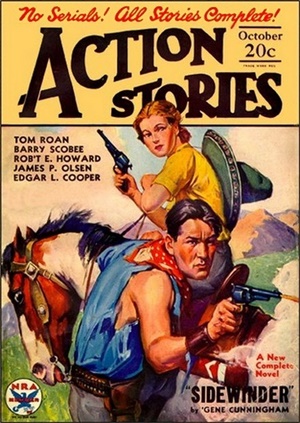 I also think that a case can be made that Howard was also inspired by the Marx Brothers in their movies, which Howard so enjoyed, with their anarchic destructions of society and its rules. Another influence on Howard was his love of talking with any older folks he saw about their memories of living on the wild Texas frontier, and storing those recollections in his memory for future use in his stories. Finally, he was also able to see the violence, and vicious practical jokes that rough oilfield workers would partake in during his years living in the oilfield boom towns of Cross Cut and Cross Plains.
I also think that a case can be made that Howard was also inspired by the Marx Brothers in their movies, which Howard so enjoyed, with their anarchic destructions of society and its rules. Another influence on Howard was his love of talking with any older folks he saw about their memories of living on the wild Texas frontier, and storing those recollections in his memory for future use in his stories. Finally, he was also able to see the violence, and vicious practical jokes that rough oilfield workers would partake in during his years living in the oilfield boom towns of Cross Cut and Cross Plains.
This brutal environment provided fodder for the violence that he would put in these tales. Taking all of these as his inspiration and mixing them with his own ability to tell a humorous story, Howard created the giant, well-nigh indestructible resident of the Humboldt Mountains of Nevada, Breckinridge Elkins of Bear Creek.
Howard sent his first Breck story, “Mountain Man”, in to Action Stories, his “old stand-by”, and the editors accepted this tale for publication in late 1933. It was published in the March-April 1934 issue and was a hit. Howard’s Breck stories then turned into the Golden Goose for him for the rest of his life. Beginning with that March-April 1934 issue, and continuing for the next 17 straight issues through the October 1936 issue, a Breck Elkins story appeared in Action Stories, with the final Elkins story, “Sharp’s Gun Serenade”, published two issues after the October 1936 issue in the January 1937 magazine.
Howard felt that with many of his Costigan stories having been published in Action Stories before it temporarily ceased publication, he had a built-in audience of fans to try his humorous new Western character out on:
“… [T]he Costigan series built up a following with Fight Stories readers, and the readers of Action Stories in which some of the yarns were published. When Fiction House revived Action Stories, there was a market ready-made for the Elkins stories”. – (Letter to Otis A. Kline, Jan. 18, 1936)
Howard used some of Costigan’s character traits in creating Elkins for this first outing—Costigan’s loyalty and general ability to take an incredible amount of punishment. And like Costigan and his beloved Bulldog Mike, Howard added in an animal companion: Breck’s cantankerous and ticking time bomb of a horse, Cap’n Kidd. But, unlike Costigan who tended to follow in the physical footsteps of Howard’s other characters at being around six feet tall, Breck was a giant at six and a half feet tall and nearly 300 pounds.
Also unlike Costigan – who generally felt the pain he was dealt in his stories – Breck could take incredible amounts of physical attacks and pain without batting an eye; only getting more annoyed or angry. He also had a large family, which provided the means to start him off on many adventures, as his “Pap” or many aunts and uncles would usually send him off to help one of the kinfolk that was in trouble. The stories are hilarious in a cartoony, slapstick style of violence. Howard also uses his command of Western or Hillbilly vocabulary and spellings for comedic effect in all of the stories.
In the first story, “Mountain Man”, Breckinridge is introduced in the following way, letting the reader know about his physical imperviousness to pain, and his troublesome relationship with his father:
I was robbing a bee tree, when I heard my old man calling: “Breckinridge! Oh, Breckinridge! Where air you? I see you, now. You don’t need to climb that tree. I ain’t goin’ to larrup you.”
He come up, and said: ”Breckinridge, ain’t that a bee settin’ on yore ear?”
I reached up, and sure enough, it was. Come to think about it, I had felt kind of like something was stinging me somewhere.
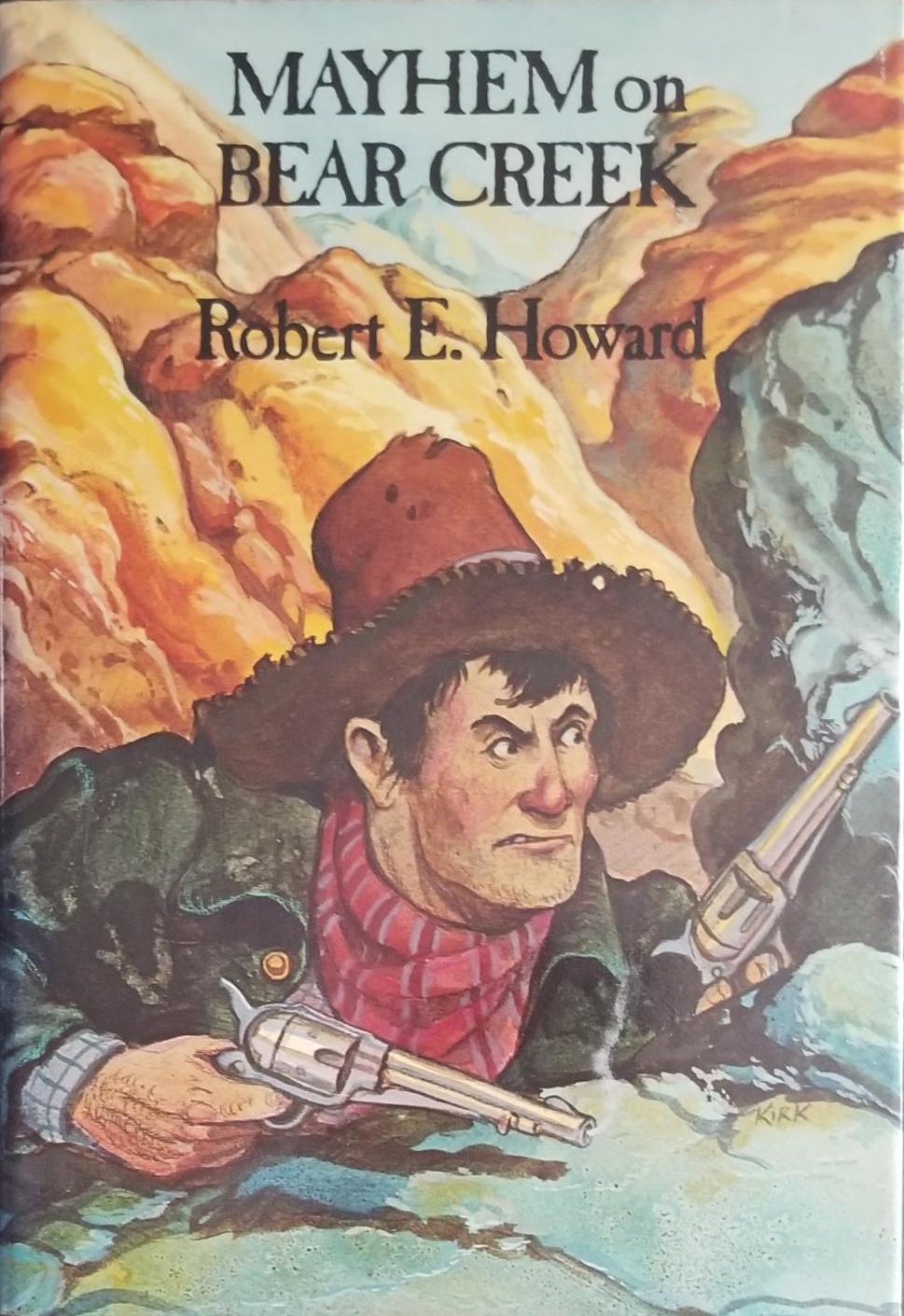 The rest of the story concerns Breck getting sent to the town of Tomahawk, to pick up a letter for Pap. Due to not being wise in the ways of the world mixed with a case of mistaken identity, Breck gets put into a boxing match created between Tomahawk and their antagonistic fellow town of Gunstock and their champion boxer, Bruiser McGoorty. Breck, once he realizes what’s going on, begins to unleash his full potential for Frontier-style violence on McGoorty, not knowing that there are ‘civilized’ boxing rules he should be following.
The rest of the story concerns Breck getting sent to the town of Tomahawk, to pick up a letter for Pap. Due to not being wise in the ways of the world mixed with a case of mistaken identity, Breck gets put into a boxing match created between Tomahawk and their antagonistic fellow town of Gunstock and their champion boxer, Bruiser McGoorty. Breck, once he realizes what’s going on, begins to unleash his full potential for Frontier-style violence on McGoorty, not knowing that there are ‘civilized’ boxing rules he should be following.
McGoorty, underestimating his opponent, agrees to the no holds barred fight, and does his best (to no avail) against the unstoppable man-mountain that is Breckinridge. The story ends up with Breck causing a riot with both towns at each other’s throats, and also at Breck’s throat once it is discovered that Breck is not the champ boxer the town of Tomahawk had hired for the fight. Tomahawk then gets demolished during the riot. In his first attempt at writing a Breck tale, Howard relied on his experience of writing his Steve Costigan stories to come up with a humorous tale revolving around a boxing match with the tried and true tropes of mistaken identities and a frontier boy being rudely introduced to the rules of civilization, creating the action and humor.
For the next Breckinridge story, Howard departed from writing a watered-down Costigan in Buckskins to create a new, different character in Breck. In this second tale, “Guns of the Mountains”, Breck’s infamous horse, Cap’n Kidd, makes his first appearance. In this story, Breck is sent to track down the robbers of his Uncle Garfield Elkins’ watch. Breck runs into a gang of men involved in a shootout with another group of men inside a cabin in the mountains. The outside group tell Breck they’re the official posse sent to catch the vicious gang of robbers, and Breck agrees to help keep the cabin-bound group pinned down while the posse moves to encircle and charge the cabin.
Of course, the outside “posse” are the actual robbers, while the real sheriff and his posse are inside the cabin. The robbers take off while Breck is keeping the official posse bottled up. When Breck discovers the truth, he takes off on Cap’n Kidd in a hail of gunfire to avoid arrest from the posse. In one of my favorite passages that reads like a Looney Toons cartoon, Breck is trying to out ride the posse up into the mountains, hanging on to a Cap’n Kidd maddened by having been grazed by a lawman’s bullet, with another bullet hitting the horse’s reins:
Cap’n Kidd had his second wind and we was going lickety-split, when suddenly I heard a noise ahead of us, above the roar of the river and the thunder of his hoofs on the rocky canyon floor. We was approaching a bend in the gorge where a low ridge run out from the canyon wall, and beyond the ridge I hear guns banging. I heaved back on the reins—and both of ‘em snapped in two!
Cap’n Kidd instantly clamped his teeth on the bit and bolted, like he always done when anything out of the ordinary happened. He headed straight for the bushes at the end of the ridge, and I leaned forward and tried to get hold of the bit rings with my fingers. But all I done was swerve him from his course. Instead of following the canyon bed on around the end of the ridge, he went right over the rise, which sloped on that side. It didn’t slope on t’other side; it fell away abrupt. I had a fleeting glimpse of five men [the robber gang] crouching amongst the bushes on the canyon floor with guns in their hands—they looked up—and Cap’n Kidd braced his legs and slid to a halt at the lip of the low bluff and simultaneously bogged his head and throwed me heels over head down amongst ‘em.
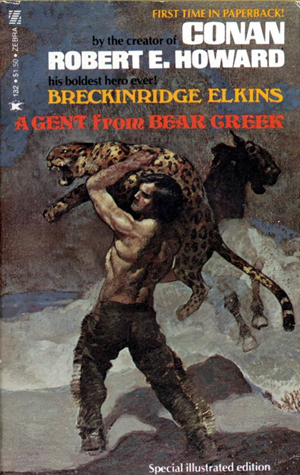
As Howard continued to write his Breck tales, he comedic writing skills improved, and the readers of Action Stories loved the yarns. Howard’s Breck stories were so popular that he decided to take several of them and stitch them together with additional new intervening tales into a novel, A Gent From Bear Creek, and see if he could sell it. It did eventually get sold to a publisher in England, and was published in 1937, as The Gent From Bear Creek. One of the new chapters Howard wrote to flesh out the book was how Breck and Cap’n Kidd formed their “partnership”, in Chapter 3, “Meet Cap’n Kidd”.
The chapter starts out following the end of the first story, “Mountain Man”, with Breck running from the irate townsfolk of the newly destroyed town of Tomahawk on his mule, Alexander. As they ride along, Breck is startled to see all sorts of animals running past him in the opposite direction as if fleeing from something horrible, a scene that often pops up in cartoons.
Breck soon runs into a group of men chasing after a magnificent, mean, wild stallion they call Cap’n Kidd. The group’s leader, Wild Bill Donovan, tells Breck that they named the stallion that after the pirate, Cap’n Kidd because “This here hoss is like him in lots of ways, particularly in regard to morals.” The group warns Breck to stay clear of Cap’n Kidd and ride off.
That night, Breck is awakened from his sleep when his terrified mule, Alexander, tries to climb into Breck’s bed under the covers for protection. Breck then hears what scared Alexander – a bloodcurdling neighing from a mystery horse.
The next day, Breck runs into Cap’n Kidd, and decides that the stallion is “the” horse for him. He then proceeds to imprison Cap’n Kidd by building a giant wall across a narrow bowl-shaped canyon having only one outlet, trapping the grazing stallion within. Cap’n Kidd then tries to get out by physically hitting and kicking Breck’s wall and the canyon walls. The horse stuns himself by knocking a huge section of rock off onto his head, and Breck takes this chance to saddle the horse and jump on to begin breaking Cap’n Kidd in.
A wild ride then starts with Cap’n Kidd trying to get Breck off of him by bucking wildly, and running Breck against the canyon walls and the new wall. Cap’n Kidd even resorts to gymnastics:
“He occasionally rolled over and over on the ground, too, which was very uncomfortable for me … I’ll admit that they is few sensations more unpleasant than having a hoss as big as Cap’n Kidd roll on you nine or ten times.”
But Breck hangs on.
“[Cap’n Kidd] looked like he was able to go on forever, and aimed to, but I hadn’t met nothing which could outlast me, and I stayed with him, even after I started bleeding at the nose and mouth and ears, and got blind, and then all to onst he was standing stock still in the middle of the bowl …”
Breck had won, and now he had a horse of untiring energy that would grudgingly carry him all day long, if need be. Donovan and his gang return and try to take Cap’n Kidd away from Breck at gunpoint, with both Cap’n Kidd and Breck disagreeing.
Throughout the stories, Breck deals with badmen, mistaken identity, feuds between family members and non-family members, and running dangerous quests and errands for family and acquaintances. He also tries to court some women in a few of the stories, but is unlucky at love. When Howard created the novel from the stories, he decided to add in a woman, Glory McGraw, that became the ultimate object of romance for Breckinridge.
In total, Howard wrote nineteen finished short stories on Breckinridge Elkins, and then the later novel with new material in it, making Breck one of Howard’s top three long-running characters along with Steve Costigan and Conan.
By late 1934, Breckinridge Elkins was doing so well financially for Howard, that Howard decided to write additional Western funny characters to place in other pulps. We will take a look at the three characters Howard created off his successful Breckinridge Elkins character in the next part.
Prior Posts in A (Black) Gat in the Hand – 2023 Series (6)
Back Down those Mean Streets in 2023
Will Murray on Hammett Didn’t Write “The Diamond Wager”
Dashiell Hammett – ZigZags of Treachery
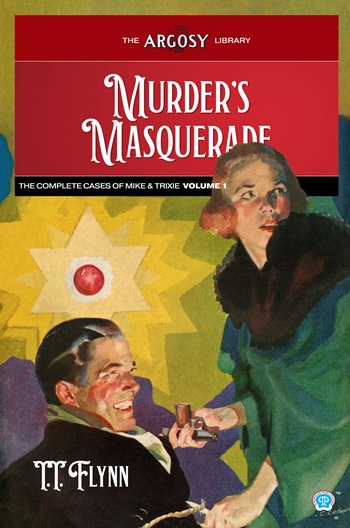 Ten Pulp Things I Think I Think
Ten Pulp Things I Think I Think
Evan Lewis on Cleve Adams
T,T, Flynn’s Mike & Trixie (The ‘Lost Intro’)
John Bullard on REH’s Rough and Ready Clowns of the West – Part I (Breckenridge Elkins)
Prior posts in A (Black) Gat in the Hand – 2022 Series (16)
Asimov – Sci Fi Meets the Police Procedural
The Adventures of Christopher London
Weird Menace from Robert E. Howard
Spicy Adventures from Robert E. Howard
Thrilling Adventures from Robert E. Howard
Norbert Davis’ “The Gin Monkey”
Tracer Bullet
Shovel’s Painful Predicament
Back Porch Pulp #1
Wally Conger on ‘The Hollywood Troubleshooter Saga’
Arsenic and Old Lace
David Dodge
Glen Cook’s Garrett, PI
John Leslie’s Key West Private Eye
Back Porch Pulp #2
Norbert Davis’ Max Latin
Prior posts in A (Black) Gat in the Hand – 2021 Series (8)
The Forgotten Black Masker – Norbert Davis
Appaloosa
A (Black) Gat in the Hand is Back!
Black Mask – March, 1932
Three Gun Terry Mack & Carroll John Daly
Bounty Hunters & Bail Bondsmen
Norbert Davis in Black Mask – Volume 1
Prior posts in A (Black) Gat in the Hand – 2020 Series (19)
Hardboiled May on TCM
Some Hardboiled streaming options
Johnny O’Clock (Dick Powell)
Hardboiled June on TCM
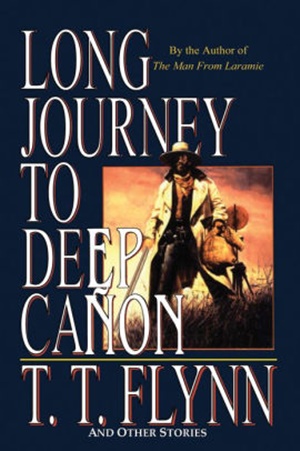 Bullets or Ballots (Humphrey Bogart)
Bullets or Ballots (Humphrey Bogart)
Phililp Marlowe – Private Eye (Powers Boothe)
Cool and Lam
All Through the Night (Bogart)
Dick Powell as Yours Truly, Johnny Dollar
Hardboiled July on TCM
YTJD – The Emily Braddock Matter (John Lund)
Richard Diamond – The Betty Moran Case (Dick Powell)
Bold Venture (Bogart & Bacall)
Hardboiled August on TCM
Norbert Davis – ‘Have one on the House’
with Steven H Silver: C.M. Kornbluth’s Pulp
Norbert Davis – ‘Don’t You Cry for Me’
Talking About Philip Marlowe
Steven H Silver Asks you to Name This Movie
Cajun Hardboiled – Dave Robicheaux
More Cool & Lam from Hard Case Crime
A (Black) Gat in the Hand – 2019 Series (15)
Back Deck Pulp Returns
A (Black) Gat in the Hand Returns
Will Murray on Doc Savage
Hugh B. Cave’s Peter Kane
Paul Bishop on Lance Spearman
A Man Called Spade
Hard Boiled Holmes
Duane Spurlock on T.T. Flynn
Andrew Salmon on Montreal Noir
Frank Schildiner on The Bad Guys of Pulp
Steve Scott on John D. MacDonald’s ‘Park Falkner’
William Patrick Murray on The Spider
John D. MacDonald & Mickey Spillane
Norbert Davis goes West(ern)
Bill Crider on The Brass Cupcake
A (Black) Gat in the Hand – 2018 Series (32)
George Harmon Coxe
Raoul Whitfield
Some Hard Boiled Anthologies
Frederick Nebel’s Donahue
Thomas Walsh
Black Mask – January, 1935
Norbert Davis’ Ben Shaley
D.L. Champion’s Rex Sackler
Dime Detective – August, 1939
Back Deck Pulp #1
W.T. Ballard’s Bill Lennox
Day Keene
Black Mask – October, 1933
Back Deck Pulp #2
Black Mask – Spring, 2017
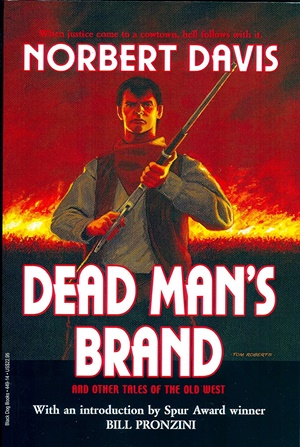 Frank Schildiner’s ‘Max Allen Collins & The Hard Boiled Hero’
Frank Schildiner’s ‘Max Allen Collins & The Hard Boiled Hero’
A (Black) Gat in the Hand: William Campbell Gault
A (Black) Gat in the Hand: More Cool & Lam From Hard Case Crime
MORE Cool & Lam!!!!
Thomas Parker’s ‘They Shoot Horses, Don’t They?’
Joe Bonadonna’s ‘Hardboiled Film Noir’ (Part One)
Joe Bonadonna’s ‘Hardboiled Film Noir’ (Part Two)
William Patrick Maynard’s ‘The Yellow Peril’
Andrew P Salmon’s ‘Frederick C. Davis’
Rory Gallagher’s ‘Continental Op’
Back Deck Pulp #3
Back Deck Pulp #4
Back Deck Pulp #5
Joe ‘Cap’ Shaw on Writing
Back Deck Pulp #6
The Black Mask Dinner
John Bullard – John Bullard is a retired attorney in Howard’s home state of Texas who caught the Howard bug after reading one of Howard’s weird fiction westerns as a young boy. It further warped his already twisted young mind. He has edited the new “Ultimate Editions” of the three-volume set of The Collected Letters of Robert E. Howard, which has sadly turned into a Sisyphean task…
He has won some awards for some of his articles on Howard and was delighted to contribute two essays to Hither Came Conan. He is a member of the Robert E. Howard Foundation Board of Directors, and helps out with the ongoing efforts of the Robert E. Howard Foundation Press to update and reissue their Howard publications. He is a long-time fan of the pulps and still doesn’t have enough time to read everything that is available, even after retiring!
 Bob Byrne’s ‘A (Black) Gat in the Hand’ made its Black Gate debut in 2018 and has returned every summer since.
Bob Byrne’s ‘A (Black) Gat in the Hand’ made its Black Gate debut in 2018 and has returned every summer since.
His ‘The Public Life of Sherlock Holmes’ column ran every Monday morning at Black Gate from March, 2014 through March, 2017. And he irregularly posts on Rex Stout’s gargantuan detective in ‘Nero Wolfe’s Brownstone.’ He is a member of the Praed Street Irregulars, founded www.SolarPons.com (the only website dedicated to the ‘Sherlock Holmes of Praed Street’) and blogs about Holmes and other mystery matters at Almost Holmes.
He organized Black Gate’s award-nominated ‘Discovering Robert E. Howard’ series, as well as the award-winning ‘Hither Came Conan’ series. Which is now part of THE DEFINITIVE guide to Conan. He also organized 2023’s ‘Talking Tolkien.’
He has contributed stories to The MX Book of New Sherlock Holmes Stories – Parts III, IV, V, VI, XXI, and XXXIII.
He has written introductions for Steeger Books, and appeared in several magazines, including Black Mask, Sherlock Holmes Mystery Magazine, The Strand Magazine, and Sherlock Magazine.
Hey, John. Great post. Good to see Howard’s Breckenridge Elkins series receiving more visibility. These stories are so funny, they always leave me amazed at Howard’s incredibly versatile talents. The one thing I would add to his influence are the humorous Westerns written by W. C. Tuttle for the pulp Adventure. Howard mention among his list of favorites some of the stories of Hashknife Hartley and Sleepy Stevens.
Thanks, Will. I have been meaning to grab one of the Tuttle reprint books, but then I look at my stacks of TBR books… And it doesn’t help when Bob talks about new authors to check out…
I really need to read the Elkins stories.
Yes, they’re highly entertaining. You’ll enjoy them. I like them more than the Costigan stories.
Elkins over Costigan. John, John, John….
🙂
Yup. I like Costigan, but it’s pretty much the same basic plot structure. Now, the Breck stories have nuances and subtleties…😉
This is a wonderful article, boyos! Breck Elkins will be featured at Howard Days 2024 in Cross Plains, when we’ll focus on what Ol’ Two-Gun was up to in 1934.
[…] E. Howard (Black Gate): I thought I would write on Howard’s humorous pulp Western characters. They are not particular […]